#Quaker history
Note
Sam, because you lived in Boston, I assume you have walked pat the statue of Mary Dyer on the Statehouse grounds. I don’t know if you were aware that the statue commemorates her hanging for being a Friend (Quaker).
I lived in Boston for a summer and I get out there at least once a year and I knew about Mary Dyer already and I made a special trip to see the monument to anesthesia on Boston Commons, and I still never managed to see this haunting motherfucker.

I have never seen such a terrifying Friend in all my days. I'm sure she was a perfectly normal-looking human in life, no judgement on Mary. And really no judgement on the sculptor, Sylvia Shaw Judson, either, she's a very good artist. It's just. What the fuck.
[ID: A photograph of the sculpture of Mary Dyer, one of Boston's "four martyrs"; her body is mostly in proportion as she sits on a bench wearing a plain dress and head covering. Her neck, however, is extremely long, as is her face, and something about the shape of the cheekbones above extremely deep-sunk eyes gives her a very Uncanny Valley aura.]
Mary Dyer's story is pretty interesting if you can stomach it. I'm perpetually surprised, though I shouldn't be, by how persecuted early Quakers were for the heresy of *checks notes* Believing in the dignity of all humanity, saying that being able to legally own another person was a bad thing, and being mostly very quiet while praying.
Like I do get it, Quaker belief tends to be in direct opposition to authority, but authority mostly sucks! The sheer terror they inspired through, basically, the act of being thoughtful, decent people seems deeply out of proportion.
(Amusingly, evangelicals still don't know what to do with Quakers much of the time. I've never seen a Baptist bluescreen as hard as the one who asked me if I'd like to come to his church and got the response "No thank you, I attend Quaker meetings." He just didn't know where to put that.)
That said, if someone who looked like this statue confronted me about bad behavior after a Meeting, I would flip the fuck out.
450 notes
·
View notes
Photo


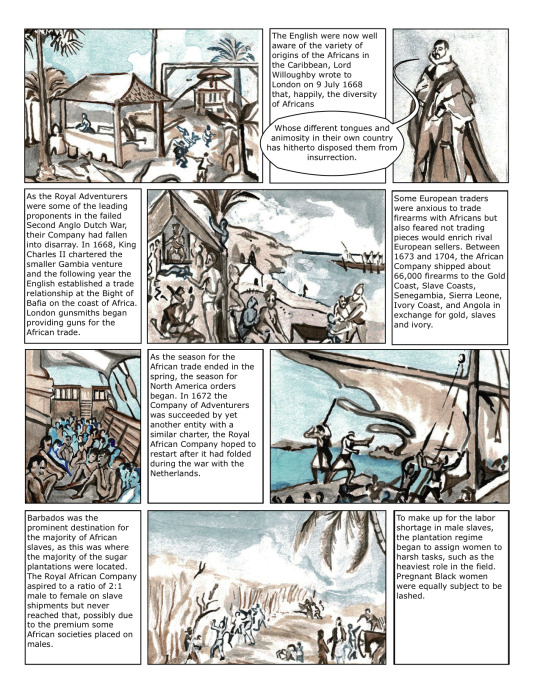

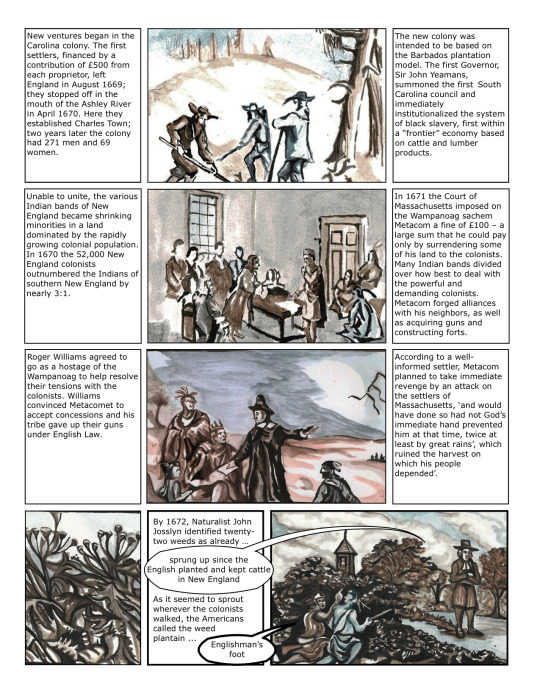
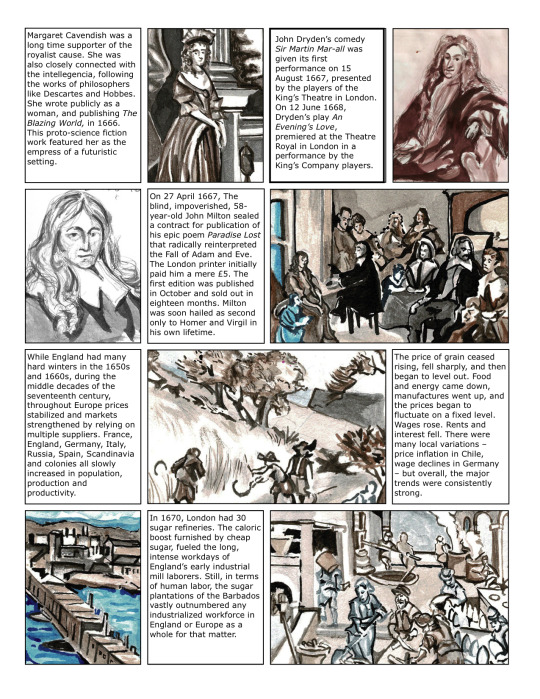

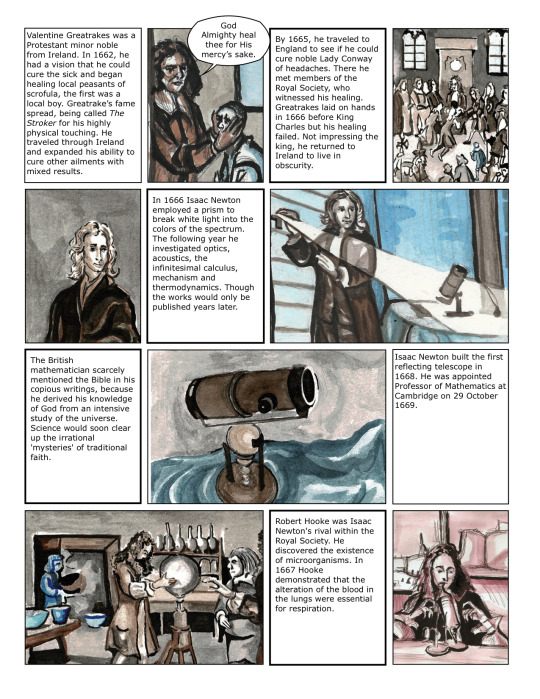


A continuation in the unending saga of fake comics. As always, this Anglo-centric work (written in English) left much out. The fake-comic did not fully engage in a Dutch narrative. Perhaps one day that narrative will be better detailed. 1672 was a critical year for the Dutch, especially their war with France. The African narrative is always something that could use more illumination as this period was what Ira Berlin called the coming of the ‘Plantation Generation’ on the mainland colonies. Previously the majority of the colonies labor depended on white indentured labor with the black population being a small minority. From my understanding, the Barbados plantation system began in legal form around 1660 and the racial-legal system spread to other English speaking colonies.
#pieter de ruyter#second anglo dutch war#restoration#third anglo dutch war#history comics#fake comics#samuel#anne bradstreet#john milton#moll davis#history of currency#captain morgan#hudson bay company#quaker history#robert hooke#isaac newton#claude duval#valentine greatrakes#margaret cavendish#william penn#john dryden#metacom#roger williams
44 notes
·
View notes
Text
Jerusalems in the United States - New York State
I reposted a blog earlier today about how Jewish Voice for Peace had at some point had people recite "Next Year in Al-Quds" instead of "Next Year in Jerusalem" during a Passover seder. Someone then commented that they could have said "Next Year in Jerusalem New York," and in fact, there is a Jerusalem, New York, and it's not very far from me. (I live in Ithaca)
The New York Jerusalem is in Yates County, right on Keuka Lake. (In the map below, it's enclosed by the dotted red line).

From a history of the town published in 1892:
"Jerusalem is practically and substantially the mother of towns in Yates County. The district, sometimes called township, of Jerusalem, was organized in 1789 as one of the subdivisions of Ontario County, and included with its limits all that is now Milo, Benton and Torrey, as well as its own original territory. On the erection of Stueben County in 1796, the region or district called Bluff Point, or so much of it as lies south of the south line of township seven, was made a part of the new formation; but in 1814 an act of the Legislature annexed Bluff Point to Jerusalem, and to which it has since belonged.
"In 1803 the town of Jerusalem was definitely erected, embracing township seven, second range, and so much of township seven, first range, as lay westward of Lake Keuka and lot No. 37. At or about the same time the other territory that had previously formed a part of the district of Jerusalem was organized into a town and called Vernon, after Snell and finally Benton."
The Public Universal Friend

Portrait of the Public Universal Friend, from 1812, unknown painter. Source: Yates County Historical Society
A famous resident of the town (famous then, not now), was the Public Universal Friend:
"The Public Universal Friend, Jemima WILKINSON, was of course a pioneer of this town, the same as she had been in the locality and settlement on Seneca Lake. In 1790 she first came to the Genesee country and four years later she established herself permanently in the town of Jerusalem."
The Public Universal Friend was born as Jemima Wilkinson in 1752 to a Quaker family in Rhode Island. Jemima was transformed into the Public Universal Friend after "a night of fevered dreams" on October 10, 1776.
Jemima took on a new identity after the fever. "'Reborn' in their place was the Public Universal Friend, neither male nor female. According to the Friend, Jemima’s soul had passed into heaven, and God had reanimated their body with the spirit of the Friend sent to spread the Quaker gospel. From then on, the Friend began to gather followers and travel as a preacher."
The Friend lived as nonbinary person: "The Public Universal Friend dressed in a way that blended masculinity and femininity, and this drew much attention. Their clothing included a cravat and robe like traditional ministers and clergymen wore, as well as the kind of hat typically worn by Quaker men. They also didn’t wear the traditional bonnet or head covering women were expected to wear. The Public Universal Friend’s gender presentation caused curiosity and anger, and it was a radical challenge to the status quo that the Friend was not willing to be bound by the customs of the community."
How did the Friend come to settle in Jerusalem, New York? After their transformation, the Friend gathered a following, and they decided to create a settlement in western New York, called Jerusalem.
The Friend's house, where they lived until dying in 1819. (Photo from the National Park Service).

Sources
Yates County, New York, History of the Town of Jerusalem: https://web.archive.org/web/20050125071905/http://www.usgennet.org/usa/ny/county/yates/jerusalem/jeruhistory.htm
New York Public Library, January 13, 2023: https://www.nypl.org/blog/2023/02/16/who-was-public-universal-friend-living-outside-gender-binary-revolutionary-times
Washington Post, January 5, 2020: https://www.washingtonpost.com/history/2020/01/05/long-before-theythem-pronouns-genderless-prophet-drew-hundreds-followers/
National Park Service: https://www.nps.gov/places/the-friend-s-home-jemima-wilkinson-house.htm
Life Story: The Public Universal Friend: https://wams.nyhistory.org/settler-colonialism-and-revolution/settler-colonialism/public-universal-friend/
Jerusalem and the Society of Universal Friends: http://upstatehistorical.org/items/show/75
More information about the Friend
The Public Universal Friend: Jemima Wilkinson and Religious Enthusiasm in Revolutionary America, by Paul B. Moyer (Cornell University Press, 2015).
"'Indescribable Being': Theological Performances of Genderlessness in the Society of the Publick Universal Friend, 1776–1819," by Scott Larson, Early American Studies 12:3 (2014) 576-600. (Special issue: Beyond the Boundaries: Critical Approaches to Sex and Gender in Early America). JSTOR link: https://www.jstor.org/stable/24474871
#American Jerusalems#Jerusalem#Jemima Wilkinson#The Public Universal Friend#Quaker history#nonbinary history
3 notes
·
View notes
Quote
You must come out of yourselves, and deny your own wisdom and reason and whatsoever springs from self – for all of this is at enmity with the Light, and opposes, argues, and contends against it, and by the Light it is condemned. If you hearken unto self, then you stumble in the way, and many stumbling blocks lie before you, and thorns and briars catch hold of you, and your feet stick in the mire...
Therefore, keep your minds unto the Light, the Messenger of God, which brings the message of peace... Keep close unto this, and know it alone to be your teacher, guide, and counselor... in all things that you are to do... Then the Light will remove all stumbling blocks, and lead you through the briars and thorns, and your feet shall not stick in the mire. But the crooked way shall be made straight, and the rough and hard way plain and easy.
James Parnell, early Friend
#james parnell#quaker#quakerism#society of friends#quaker history#denial of self#the inner light#stumbling#spiritual darkness#keep your mind unto the Light#messenger of God#inward teacher#your feet shall not stick in the mire
11 notes
·
View notes
Text
Has anyone seen Rustin yet? What did you think of it? Wanna watch it later
#bayard rustin#rustin 2023#quakerism#i don't like the biopic naming convention of surnames as the title its uncreative#or first names only too its boring#quaker history
0 notes
Text
Long after all the other people who took a turn at the podium retired for the night, Rustin was still there, directing 500 volunteers in a strenuous cleaning effort to leave the National Mall better than they’d found it. He wasn’t listed as a speaker on the program; instead, he was allotted less than 30 seconds to summarize the demands made by the leaders who spoke before him. In footage captured that day, Rustin is often visible in the background, standing just behind the various speakers.
0 notes
Text
Q&A with Norman E. Donoghue II
The author of Prisoners of Congress: Philadelphia's Quakers in Exile, 1777–1778 discusses the role of the Quakers in the American Revolution, their arrest, and the legality of it all.
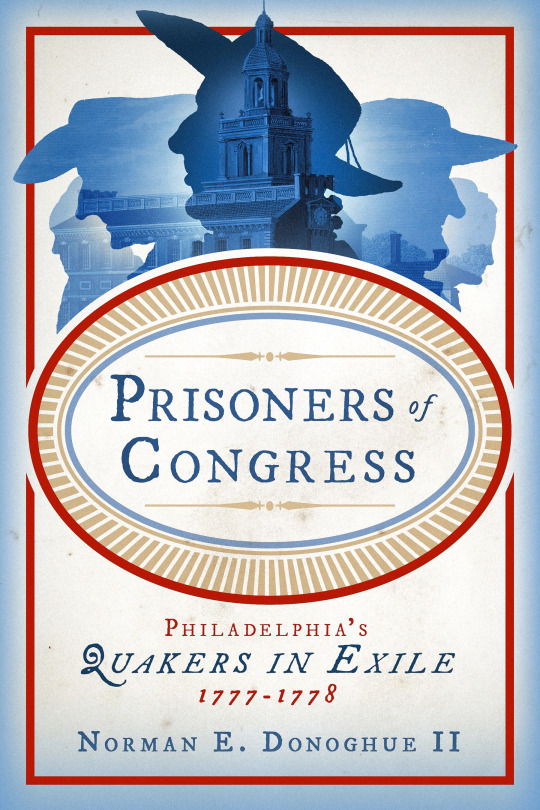
Why would the Continental Congress and Pennsylvania state authorities think that the Quakers were a threat to national security?
Because the leaders of the Religious Society of Friends—members of which are commonly called Quakers—declared they were neutral and refused in multiple ways to cooperate with the newly elected Pennsylvania government, who sought to mount a defense of the city of Philadelphia against the British Army, which contained more than 15,000 soldiers and was heading towards the city. The British Army captured and occupied the city for over eight months in 1777–78. Patriot authorities were afraid that the Quaker leaders might, wittingly or unwittingly, collude with the enemy.
Was their arrest without any criminal charges legal?
No arrest warrant had been obtained from a judge, but state authorities ordered the militia to arrest the Quaker men. If the arresting party was questioned, they were told to say that Congress recommended the arrests. This was a legally insufficient basis on which to arrest men and no crimes were ever alleged to have been committed by them.
Why wouldn't the Continental Congress give them a chance to defend themselves?
The British Army was making its way to Philadelphia only forty miles away, and the Congress itself was preparing to leave the city to avoid the enemy’s troops. This was a threatening situation.
Did this event create any legal firsts in the nation's history?
This series of events included the first and only time that Pennsylvania ever passed a law that suspended habeas corpus in the commonwealth. Such laws had typically been used by Parliament in England to support divine-right monarchs and enable the government to take into preventive detention men they claimed were suspicious but had no valid evidence against. The law provided that the court could not entertain a petition for a writ of habeas corpus that would force the government to take an arrested person before a neutral judge to determine if the arrest was legal or if the person should be released. This right derived from the Magna Carta signed by King John of England in 1215 and is foundational in a rule of law country such as ours.
Prisoners of Congress: Philadelphia's Quakers in Exile, 1777–1778 is now available from Penn State University Press. Learn more and order the book here: https://www.psupress.org/books/titles/978-0-271-09507-3.html. Save 30% w/ discount code NR23.
#Pennsylvania#Pennsylvania History#Quaker#Quakers#Quaker History#Friends#American History#US History#American Revolution#New Books#Books#Penn State University Press
1 note
·
View note
Text
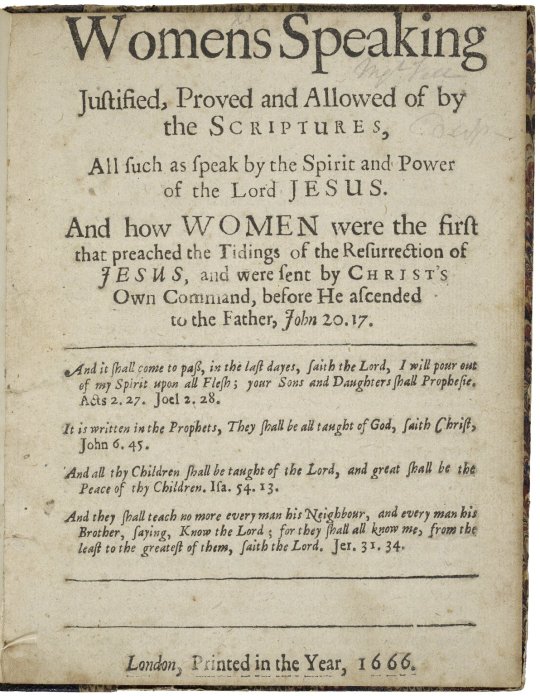
Margaret Fell, sometimes described as the Mother of Quakerism died today - the 23rd April 1702 in the 88th year of her age.
17 notes
·
View notes
Text

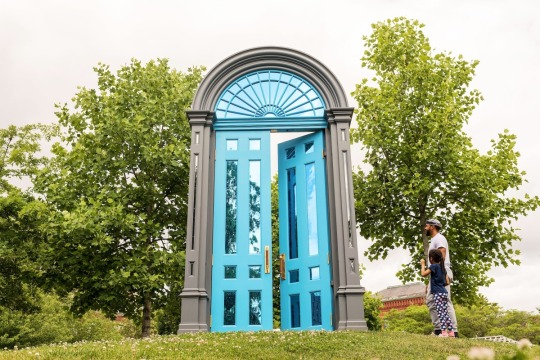
Mark Reigelman, “Threshold” (2023)
“Threshold” by sculptor Mark Reigelman will be a public artwork celebrating the principles of equality and community-building that have been integral to the history of New Bedford. Inspired by the Religious Society of Friends (Quakers) who inhabited the city in the late 17th century as well as the aesthetic of New England’s archetypal colonial doorways, Mark Reigelman beckons viewers toward Threshold’s partially opened door, shining down on Custom House Square from its 17-foot-tall perch.
Threshold will draw on the unique architecture of the federal doorway of the oldest building in New Bedford’s Abolition Row Historic District, constructed mainly from wood and steel, an important site in the early Black freedom struggle. Its double-sided door references the community’s diverse history, with its blue façade facing the Wharf and rising sun as a nod to the city’s fishing roots. At the same time, its massive arched window is tiled with colorful mirrored pieces, capturing the various identities and cultures that have made up the city.
#art#design#doorway#architecture#heavensdoorways#doors#doorsdesign#doordesign#entrance door#new bedford#quakers#new england#mark reigelman#black freedom#black lives matter#american history#black american history
58 notes
·
View notes
Text



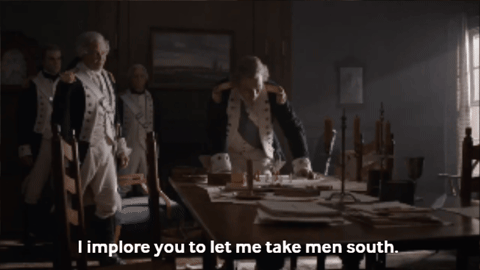

Major General Nathanael Greene in TURИ
The Second-in-Command, Hero of the South, The Fighting Quaker
#history#amrev#turn: washington's spies#gifs#my gifs#gifset#turn amc#nathanael greene#the fighting quaker#he's mentioned a total of four times#these are those four times#american revolution
13 notes
·
View notes
Text
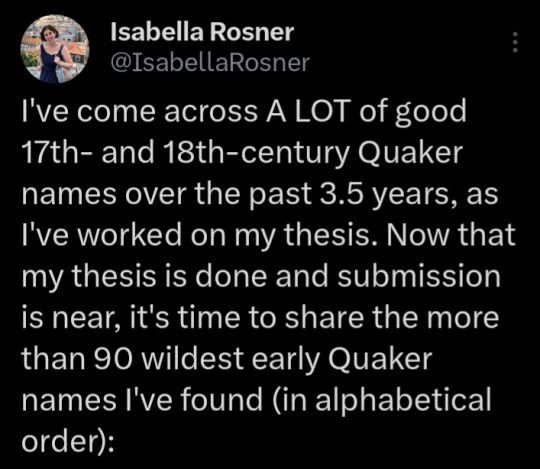

Glad everyone is getting so much joy from early Quaker names! Looking forward to seeing any future pets/children/bands/drag acts named after stuff on this list.
79 notes
·
View notes
Text
another day another 2 hour despair sesh on the phone with my mum about Palestine
#red said#apparently the British Society of Friends won't allow an epistle that mentions 'the war in Gaza' in case it upsets 'the Jewish community'#literally MENTIONING THAT THERE IS A WAR#bc mum and the rest of the meeting agreed to remove reference to it starting on October 7th WHICH IT OBVIOUSLY DID NOT there are concerns#about Appearing Antisemitic. by MENTIONING THAT IT'S HAPPENING WITHOUT BLAMING KHAMAS#the justification. apparently. is that we're already on thin ice with The Jewish Community because of Quaker activities in Palestine#which have been largely to do with challenging apartheid and trying to help broker peace processes#so me and mum are both like. ok so are we pro Palestine or pro genocide as an organisation?#because if we think Genocide Is Bad then we should not be afraid to say We Think Genocide Is Bad#and we can also say We Think Antisemitism Is Bad because SHOCK FUCKING HORROR not all Jews represent the State of Israel#in fact basically none of them do#anyway whatever the fuck happened to plain speaking i wanna know#when in history have the faction of Quakers who wanted to never upset anyone been the drivers of change?#wasn't the Quakers going 'obviously we are anti slavery but we shouldn't SAY that in case we upset White People' who we remember positively#they're also changing dates on a lecture Corbyn was due to give in order to avoid accusations of antisemitism#to which i have GOT to ask. 5 months into a genocide and we're STILL giving credence to the idea that criticising Israel is antisemitism?#i will scream until my lungs pop
16 notes
·
View notes
Link
I saw mention of Paul Cuffe Jr.’s memoir in a book about black whalers, and on a whim, I thought I’d look it up. Boy, am I glad I did. Twenty pages long, so a quick read, and man, was it a wild ride. It began in the most boring nerdy way possible with several years of him working as a merchant sailor, one sentence per voyage, no more detail for each voyage than destination point, cargo, length of passage, and length of layover, just pages and pages of that -- and then without any kind of warning suddenly we’re in the middle of the War of 1812 and he’s taken prisoner and drugging the prize crew and battling the captain with a hatchet in an attempt to retake the ship, and then after several pages of the most desperate reversals and escapes and recaptures and whatnot, it’s back to “and then we took a load of [cargo] to [port], passage [number] days,” until suddenly he’s fighting pirates now. And it see-saws wildly like that through the whole damn thing, all around the Atlantic then into the Pacific, sometimes he’s a merchant, sometimes he’s a whaler, sometimes he’s just making a quick buck somewhere, and did I mention he lived on a South Seas Island for a while?
Anyway, if anyone is interested in a twenty-page memoir of a black-and-indigenous New Bedford sailor ca. 1808-1839, with side-forays into the War of 1812, whaling, pirates, and the going price of giant tortoises, this here is a thing that exists and which you can read for free.
(Tagging a couple of people who might be interested: @clove-pinks @benjhawkins)
189 notes
·
View notes
Quote
God dwelleth in me, and I in him. And now I see that to love, to cloth the naked, and to feed the hungry is enough.
A Cambridgeshire woman in 1653, according to Margaret Spufford’s account
781 notes
·
View notes
Text
Taffeta Tuesday

This grey taffeta Quaker dress ca.1825 is part of the MFA Boston collection.
Description from the MFA Boston website:
"Fitted bodice, open down front, probably closed with a brooch, lined with glazed linen which overlapped in front, long sleeves, full and puffed slightly at shoulders tapering to narrow wrist, skirt with fullness in soft knife pleats, rest of fullness at center back, front panel of skirt drop front; many small brownish stains."
Quaker's dress of gray taffeta – Works – Museum of Fine Arts, Boston (mfa.org)
19 notes
·
View notes
Text
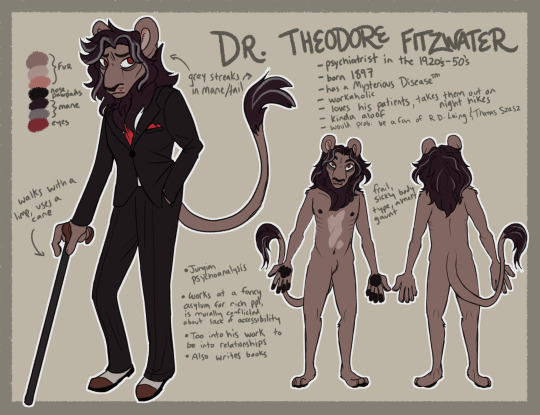
Made a refsheet for Dr. Fitzwater... I love he
#my art#dr. theodore fitzwater#my ocs#furry#clean furry#[uses my limited knowledge of the history of psychiatry to create a Guy]#he's a cool guy tho#probably engages in some wack shit like hydrotherapy but at least he's not Lobotomizing People#he's into Moral Treatment (the Quaker movement!) despite it kinda dying out around his time#fancy fucker i love him so much
20 notes
·
View notes